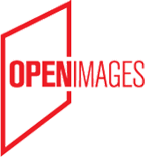Media item
Open Culture Data - lessons-learned and what’s next
closeLicense
Creative Commons – Attribution-Share Alike
 You are free to remix, tweak, and build upon this work even for commercial purposes, as long as the author or licensor is credited, and new works are licensed under identical terms.
You are free to remix, tweak, and build upon this work even for commercial purposes, as long as the author or licensor is credited, and new works are licensed under identical terms.
closeDownload
- MP4 (512x288, sd 26.7 MB): 06/26/626844.626791.3_4_OCD_Lessons_[..].mp4
- MP4 (1920x1080, hd 50.4 MB): 06/26/626846.626791.3_4_OCD_Lessons_[..].mp4
- WEBM (512x288, sd 28.2 MB): 06/26/626848.626791.3_4_OCD_Lessons[..].webm
- OGV (512x288, sd 9.5 MB): 06/26/626840.626791.3_4_OCD_Lessons_[..].ogv
- OGV (1920x1088, hd 135.4 MB): 06/26/626842.626791.3_4_OCD_Lessons_[..].ogv
- MOV (1920x1080, source 204.8 MB): 06/26/626791.3_4_OCD_Lessons_learned[..].mov
Part 4 of 4 videos on the Open Culture Data network.
In total, there are now 35 (and counting) Open Culture Datasets of 22 individual providers available under open licenses. A diverse range of forty apps has been made based on Open Culture Datasets. We have determined the following lessons learned that we feel are critical for our success, and for that of similar initiatives:
- Innovators lead the way. By gathering the right group of professionals in the cultural domain who believed in the (potential) power of open and were willing to experiment, we created a small but very powerful vanguard.
- Create practical examples. We have learned that by putting open culture data in practice and actively stimulating the reuse of the data, cultural institutions can be convinced to join the movement.
- Thinking about open culture data requires a multidisciplinary perspective. Many cultural institutions have particular ideas about new applications and services for their data, but this is only one way of looking at it. We have learned that connecting cultural institutions with the “outside world”—the world of hackers, designers, and students, but also other data providers and commercial companies—is very helpful to institutions in finding new ways to make arts and culture meaningful in the digital era.
Open Culture Data also looks towards the future. Now that many cultural datasets from early adopters in the Dutch cultural heritage sector can be reused, a need arises to measure the effects of opening up culture. Various stakeholders have expressed to us the need for a measurement model for the impact of opening up culture to gather evidence-based arguments in favor of opening up.Open Culture Data will develop a measurement model (GLAMetrics) to gather evidence about the effects of open distribution. For the P2PU (http://p2pu.org) grassroots open education project, together with Creative Commons Netherlands we developed free online courses for GLAM professionals who are interested in opening up their data or content, based on the masterclass (https://p2pu.org/nl/groups/open-glam/). The first actual European Open Culture Data spinoff was launched in Belgium September 2012 and will organize its first hackathon in September 2013. In the coming years, we hope to see a vast increase of freely sharable and reusable collections that inspires an ever-growing, connected GLAM community.
More information: http://www.opencultuurdata.nl/about/ and http://mw2013.museumsandtheweb.com/paper/open-culture-data-opening-glam-data-bottom-up/
This video was produced by the Netherlands Institute for Sound and Vision in collaboration with Kennisland, as part of the large-scale digitisation project Images for the Future.
The Netherlands Institute for Sound and Vision safeguards more than 800.000 hours of television, radio, music and film from 1898 to today, and collects, preserves and opens this audiovisual heritage for as many users as possible: media professionals, education, science and the general public. Kennisland works on social innovation, gives advice and develops solutions for the issues that crop up during the transformation to a stronger knowledge society. Sound and Vision and Kennisland are both partners in Images for the Future, a large-scale digitisation project in which four organisations have a large part of the audiovisual heritage of the Netherland through preservation and digitisation. The digitised materials are made as broadly available as possible for education and the general public.
- Creator:
- Sebastiaan ter Burg (director, editor, audio) / Netherlands Institute for Sound and Vision (producer)
- Publication date:
- 18 April 2013
- Length:
- 03:23
- Type:
- video
- Original format:
- Digital (source) file
- User:
- Petux Petuxovich Petuxov

